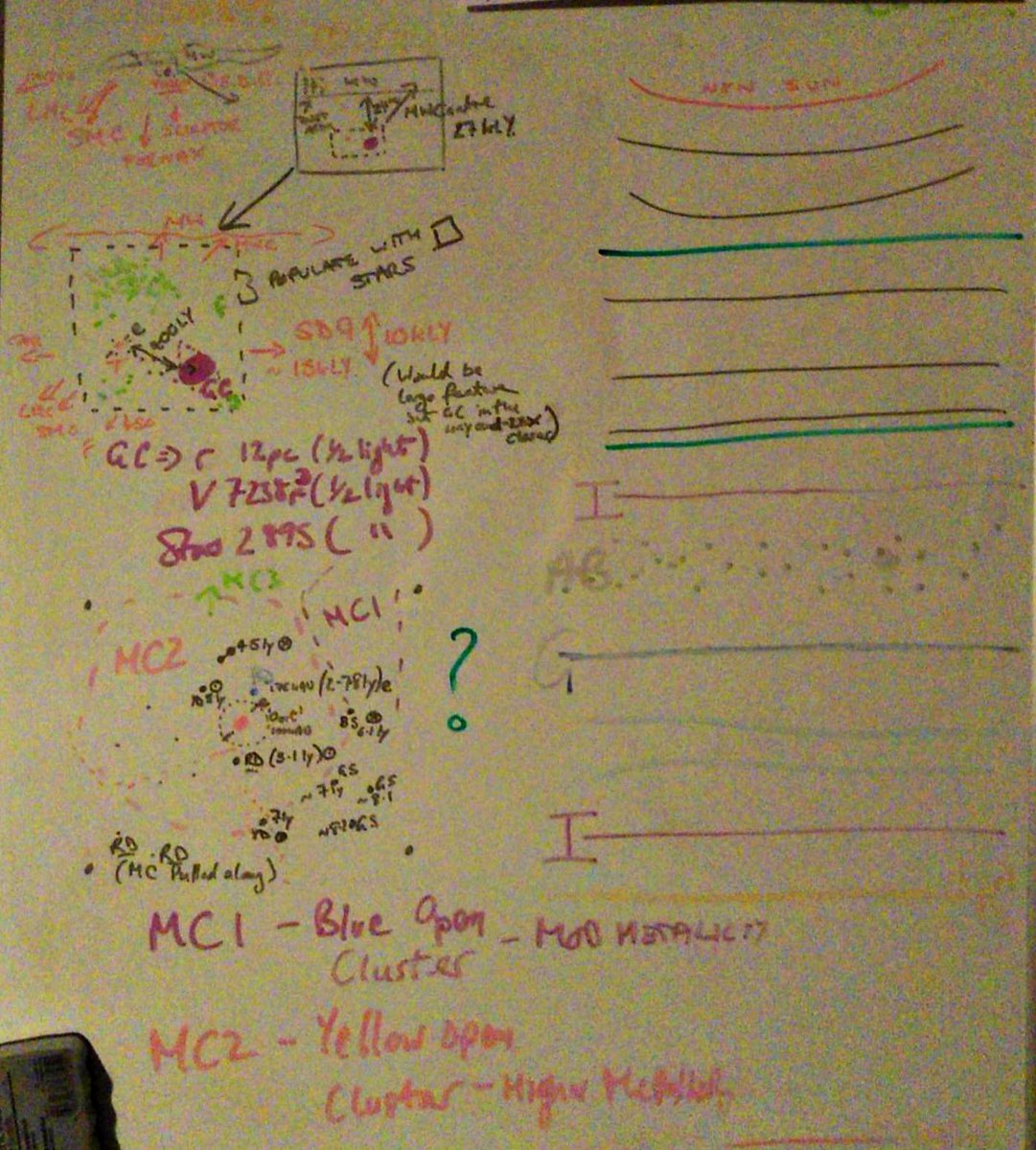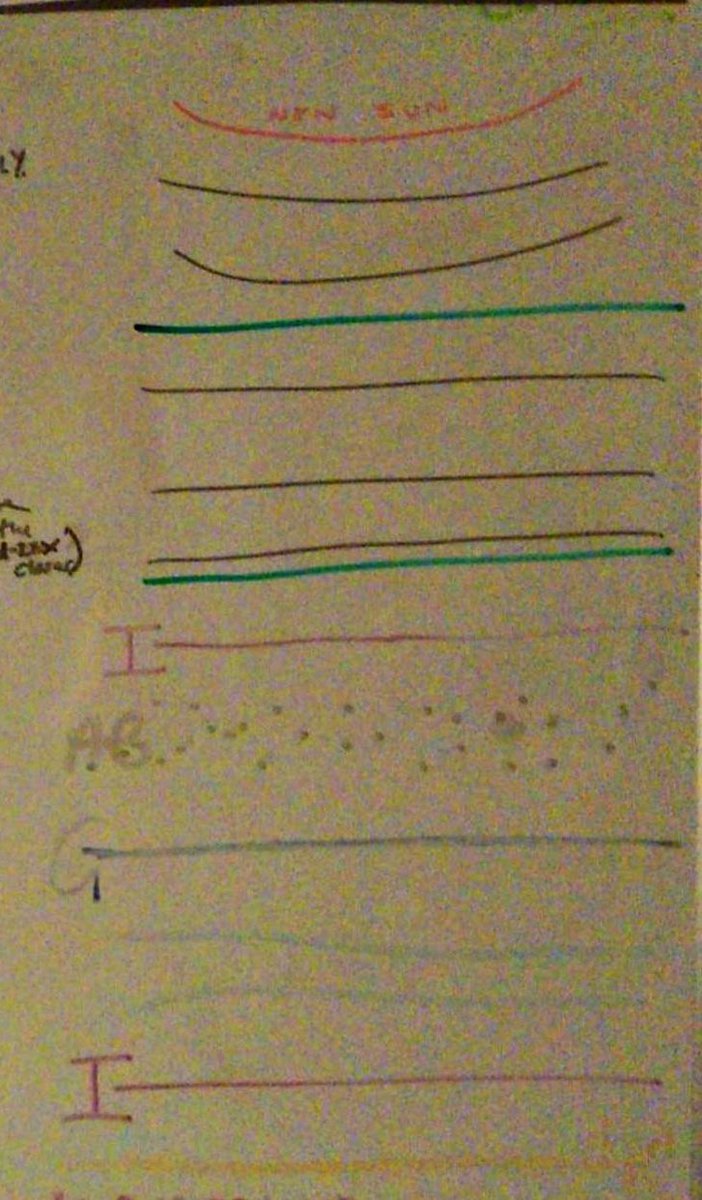A quick glance into the mind of a #WIPWorldBuilders follower. It would be nice to join in this month with Terafauna. For now, here& #39;s this. I might thread in an explanation...
So, starting with the top left, you can see the Milky Way edge on with the rough positions of nearby Dwarf Galaxies, the Sun and a ficticious globular cluster. I think its in purple...
Black box next to that is a close-up of the Globular cluster, showing that from the point of view of the system in which my story takes place it will be in front of the Sagittarius Dwarf Galaxy. The whole thing will be a feature of the southern sky.
The dotted box describes the region around my setting, with the Globular Cluster (GC) in the bottom right and different regions of (now ancient) star formation. These were caused when the GC ploughed through the plain of the Milky Way. Some older stars have been captured too.
At this point I did some further research and maths. I& #39;ve arbitrarily assigned the GC half-light and -mass radii, as well as a tidal range. This means putting my setting further away than intended, but there will be plenty of stars nearby...
So I assigned 3 areas for stars formed of different materials, put the plain of the setting& #39;s ecliptic so the GC was in its Southern hemisphere and added its star& #39;s unusual companion: a Brown Dwarf at the limit of the system.
That& #39;s when I made my mistake...
That& #39;s when I made my mistake...
So I introduced the Brown Dwarf (BD) as an oddity, something to explore and play with, but it also served a role. Its position in this system& #39;s equivalent of our Oort cloud had 2 benefits:
1. Kicking lots of comets into the inner system during the formation of the rocky planets
1. Kicking lots of comets into the inner system during the formation of the rocky planets
This means there is A LOT of water available.
2. Hoovering up or ejecting the remaining debris, making later comet strikes less likely.
But look where I put it; 175AU from the star. That& #39;s about 2 light years which flies in the face of my original idea: lots of close stars.
2. Hoovering up or ejecting the remaining debris, making later comet strikes less likely.
But look where I put it; 175AU from the star. That& #39;s about 2 light years which flies in the face of my original idea: lots of close stars.
This isn& #39;t a failure, I& #39;ve just put the wrong numbers in. I& #39;m going to move the star much closer to the GC, move the BD firmly into its & #39;Oort Cloud& #39; and have fun with it. It is sci-fi after all. I& #39;ll explain the last 2 bits in a short while.
Firstly, there are many stars, many planets in 4 distinct regions. My setting is in amongst other yellow (and slightly hotter) stars with lots of rocky planets. Nearly the Milky Way is a region of newly formed Blue Stars and evidence of recent supernovae.
Further from the system are some older stars, mostly Red Dwarfs, which appear to have been knocked out of the Milky Way. This area overlaps with the first and the GC, which is the final region; old, boring Population II Stars and a few Rogue Plants.
Secondly, the bit on the right is the orbits of the planets in the system (I really need a name for it, even if it& #39;s just letters and numbers). It isn& #39;t finished, but it maps out the regions. There are 5 rocky planets, in black, 3 within the green lines of the habitable zone.

 Read on Twitter
Read on Twitter



